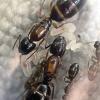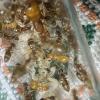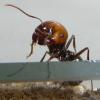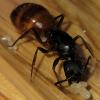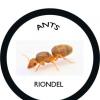- Formiculture.com
- Forums
- Gallery
- Members
- Member Map
- Chat

Mettcollsuss's Ant Journals (Updated 23 Oct 2023)
Started By
Mettcollsuss
, Apr 8 2019 8:59 AM
189 replies to this topic
#181
 Offline
-
Posted June 18 2022 - 2:06 AM
Offline
-
Posted June 18 2022 - 2:06 AM
That’s some wonder log you found! Great work.
- TennesseeAnts and Antkeeper01 like this
"The ants are a people not strong, yet they prepare their meat in the summer." Prov. 30:25
Keep ordinary ants in extraordinary ways.
Keep ordinary ants in extraordinary ways.
#182
 Offline
-
Posted June 24 2022 - 1:58 PM
Offline
-
Posted June 24 2022 - 1:58 PM
Any updates on the Prenolepis imparis?
#183
 Offline
-
Posted January 30 2023 - 6:29 PM
Offline
-
Posted January 30 2023 - 6:29 PM
Any updates on your Lasius Speculiventris?
#184
 Offline
-
Posted June 24 2023 - 8:17 AM
Offline
-
Posted June 24 2023 - 8:17 AM
Well this is a very long overdue update. I've had to take a bit of a step back to focus on finishing high school and looking into colleges. My ant collection has changed quite a bit in the last year. My current colonies are:
- Acromyrmex versicolor
- Aphaenogaster tennesseensis
- Forelius pruinosus
- Formica montana
- Pheidole bicarinata
- Pogonomyrmex occidentalis
The previous jewels of my collection, my Lasius speculiventris and Trachymyrmex septentrionalis, are no more unfortunately. The speculiventris were going strong until the queen decided to just drop dead one day. The Trachymyrmex was my fault; in their first winter with me there was way too much condensation in the setup, so I tried to make the setup a bit drier before this years hibernation, and I forgot to water them for a bit too long. Most of my other previous colonies have died or been sold/traded.
Acromyrmex versicolor
I'll open this section with a disclaimer that at the time I bought them I didn't realize that the seller's permits were suspect.
I received this colony in August last year, as a small founding colony with three queens, a small chunk of fungus, and a few workers. Currently, they are filling two 3x3in nests, and starting construction of more gardens in a larger 5x5 nest. I've got no clue how to estimate population with these guys hiding most of their workers in the fungus, but they're definitely starting to hit the exponential growth phase. They still have all three queens to my knowledge so I'm hoping that they stay polygynous long term. I've been able to speed up their development by installing an extra hole in the lid of the nest so that I can just shove flowers directly into the nest, rather than waiting for them to forage themselves. Nothing particularly unusual or noteworthy has happened so far, so I'll just let y'all se their growth through the photos.
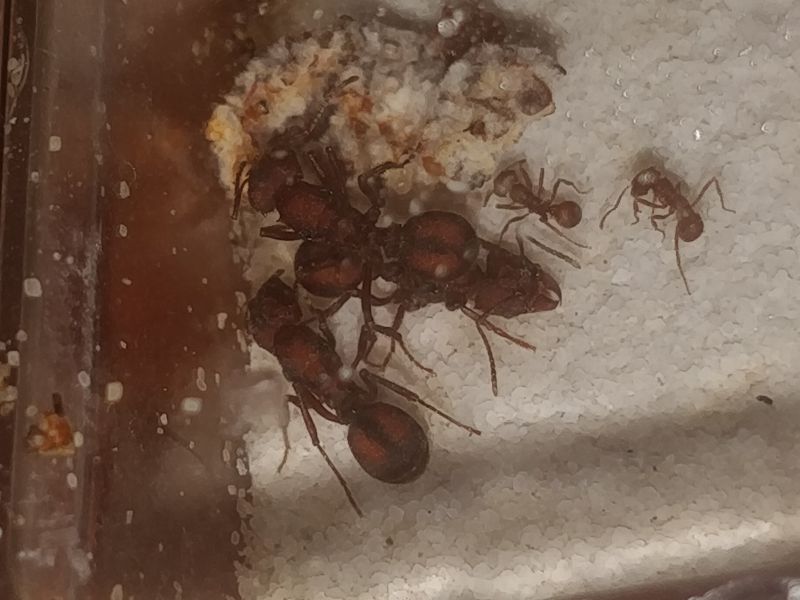
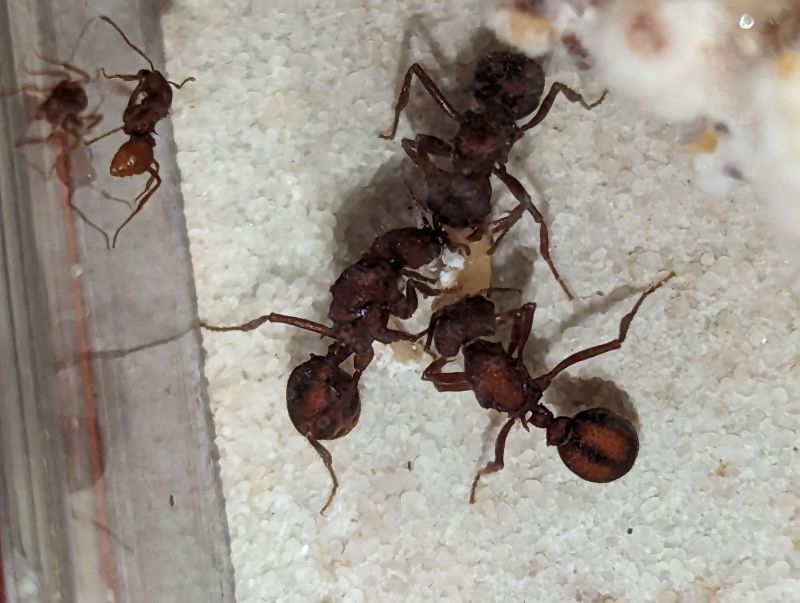
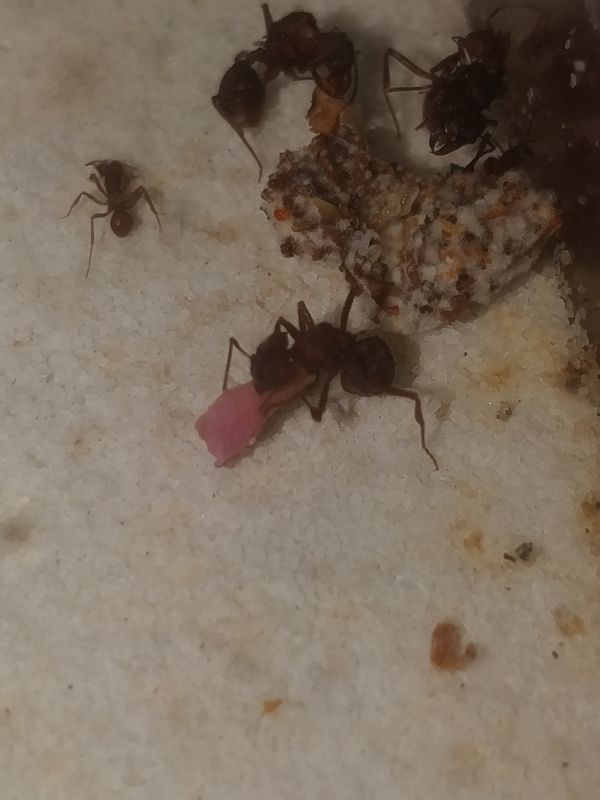
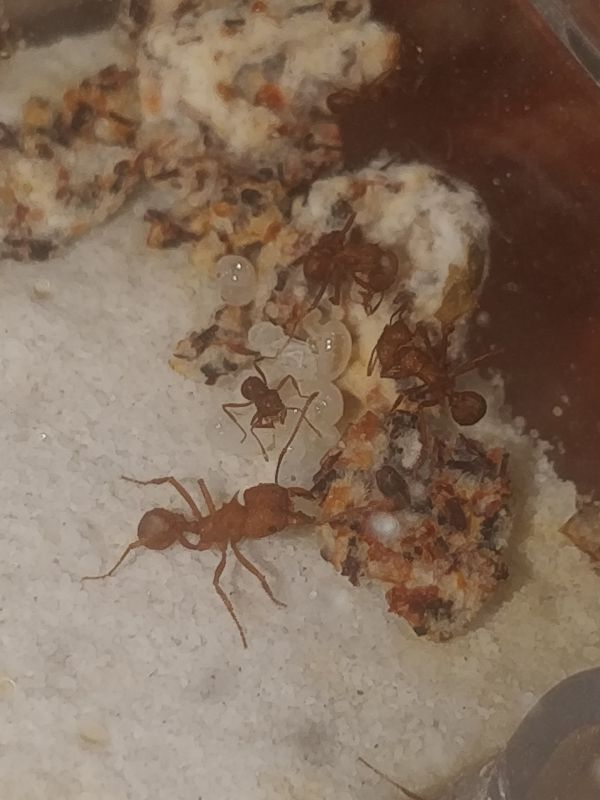
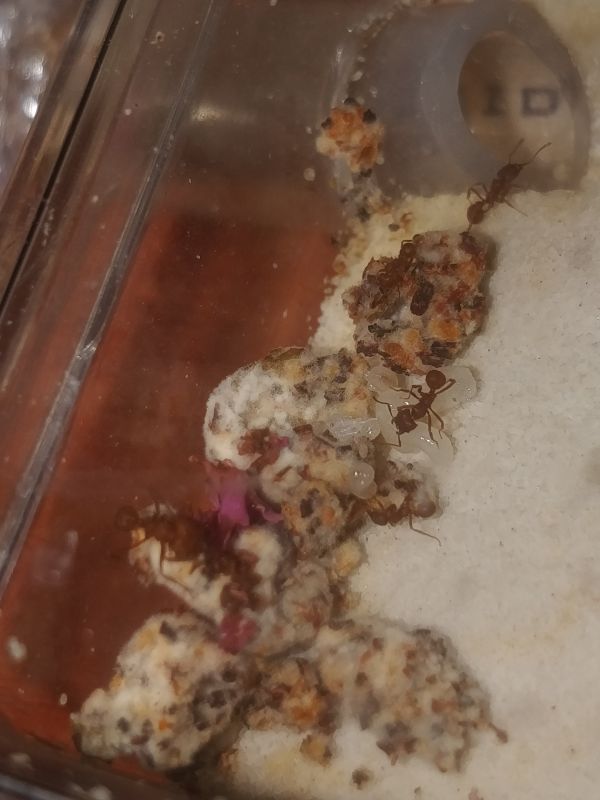
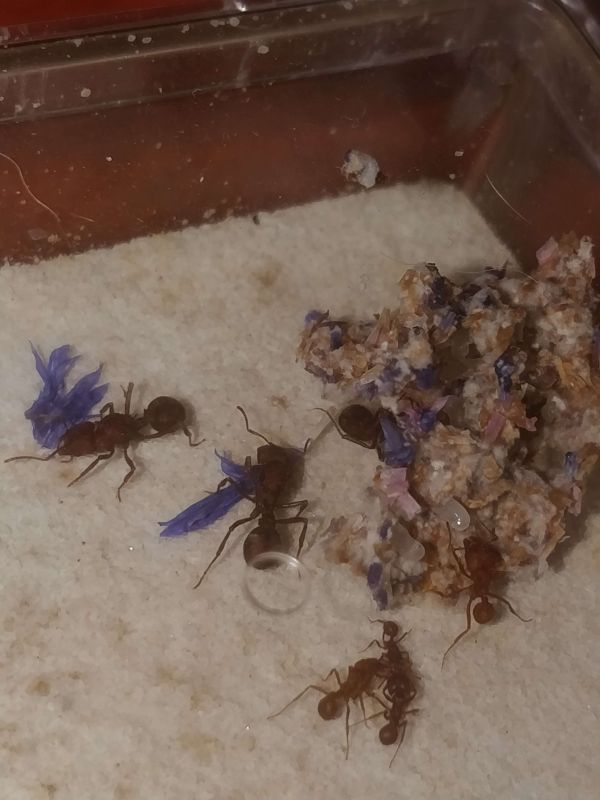
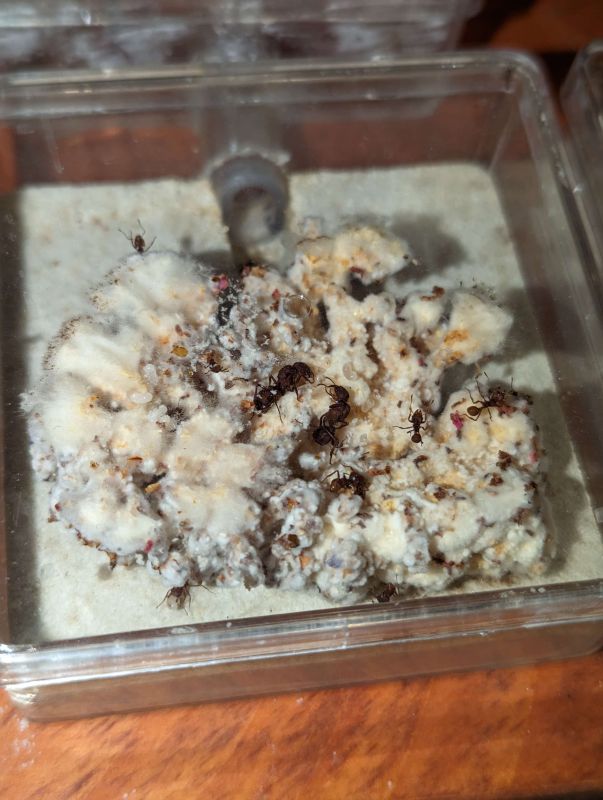
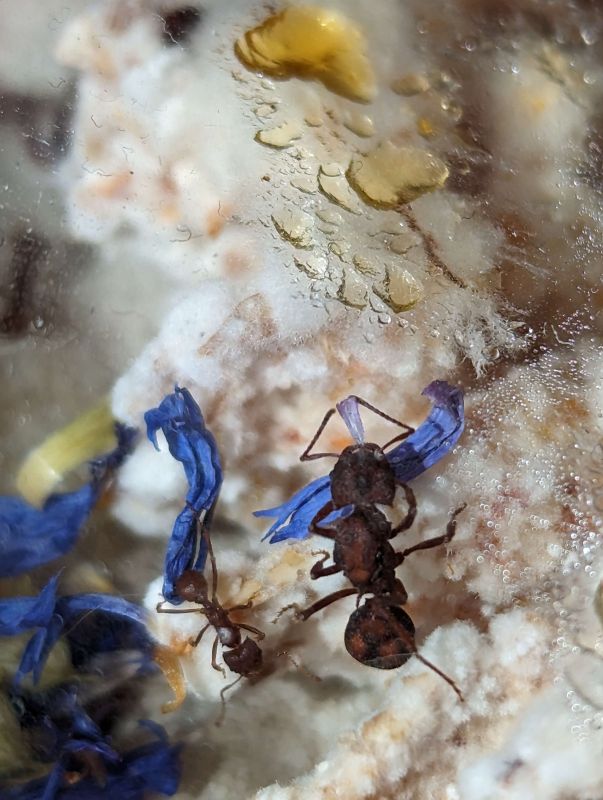
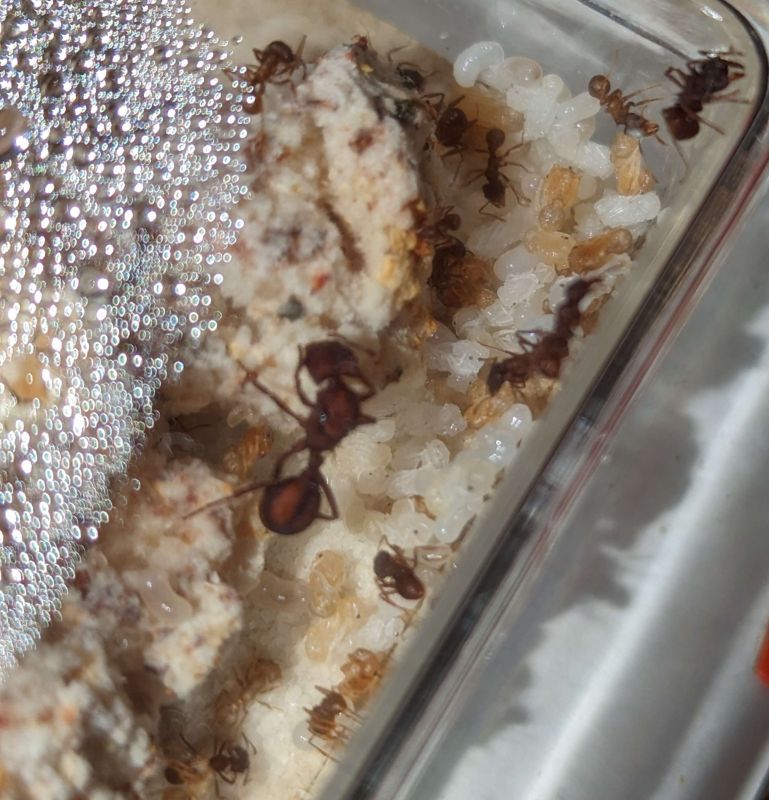
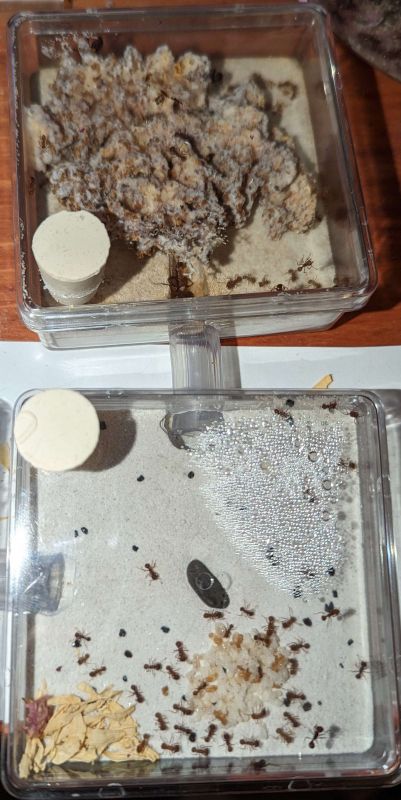
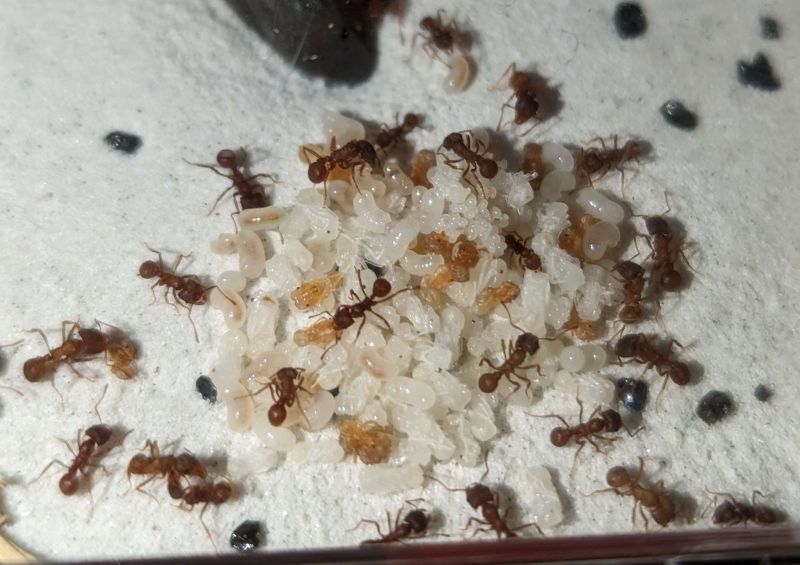
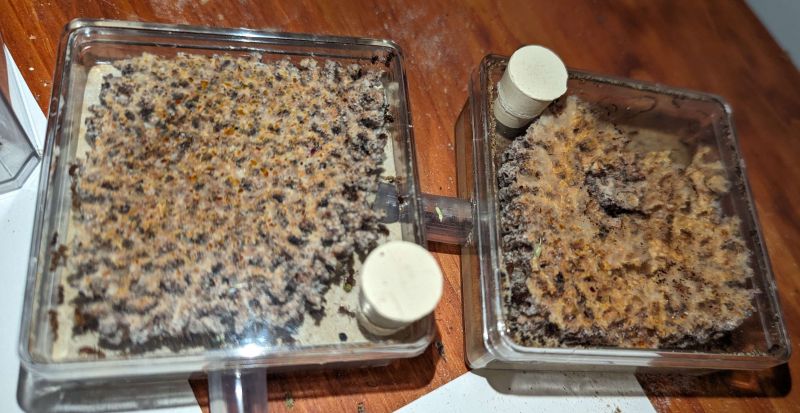
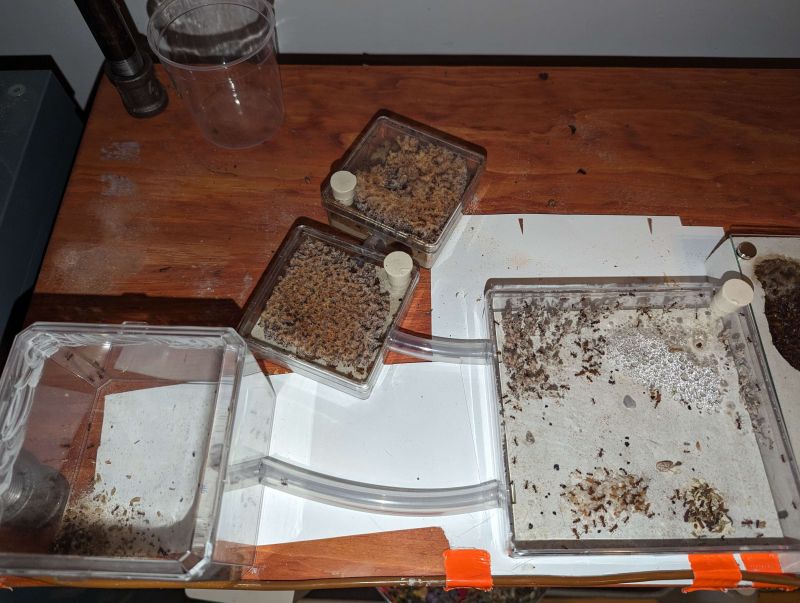
Aphaenogaster tennesseensis
This colony has been growing slowly but steadily since the last update. They had a bit of a die-off this spring since I wasn't really feeding them enough, but now they're picking up steam again. I found an A. tennesseensis queen last year and attempted to found a colony myself, but I unfortunately found her decapitated the next day.
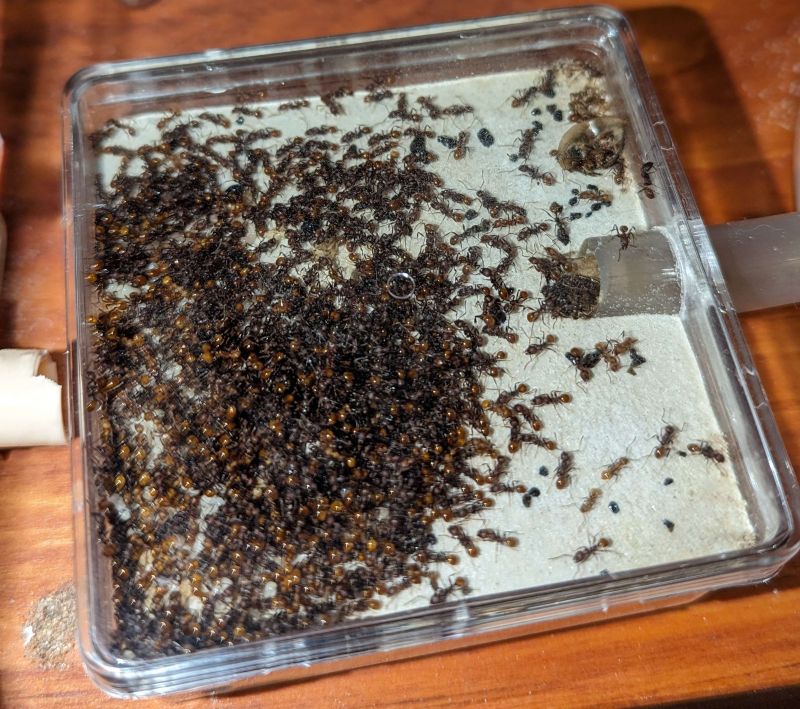
Forelius pruinosus
I recently bought this four queen colony of Forelius. Their workers are the brownish/orange typical of southwestern Forelius; definitely not the same species as the grey/brown and orange bicolored ones I'm used to up here in the midwest, but they're both called pruinosus for now, so the permits still work. They're very fond of their sugar water, but they seem pickier about roaches and their brood pile is suffering a bit because of it. Fortunately they have a new and pretty large batch of small larvae, so hopefully I'll be able to force feed them enough to get them to actually grow. They also love to make ant mills around their sugar feeder if I don't regularly break up the trail.
Formica montana
Definitely my favorite Formica species I've kept so far (granted, I haven't had a successful parasitic Formica colony yet). They're small but very active and aggressive, akin to parasitic species. Apart from that though, nothing particularly remarkable; they've just been sitting around on my desk so far this year. I'm unsure whether I'll still keep them going forward.
Pheidole bicarinata
Definitely one of my favorites of my collection. As far as Pheidole overall go they're nothing special, but this far north I'm starved for Pheidole so I'll take what I can get. They've recently hit the exponential growth phase. They earned themselves a setup upgrade last week by escaping and moving into the hydration chambers of three of my other colonies, which was a pain to get them back out of. Given how small they are compared to their outworld, they're the only colony I have that I get so see trailing when I feed them. They're finally completely filling their first tube, and have an impressive brood pile. So far they've just been living off roaches and teff seed, which is fun to watch them collect.
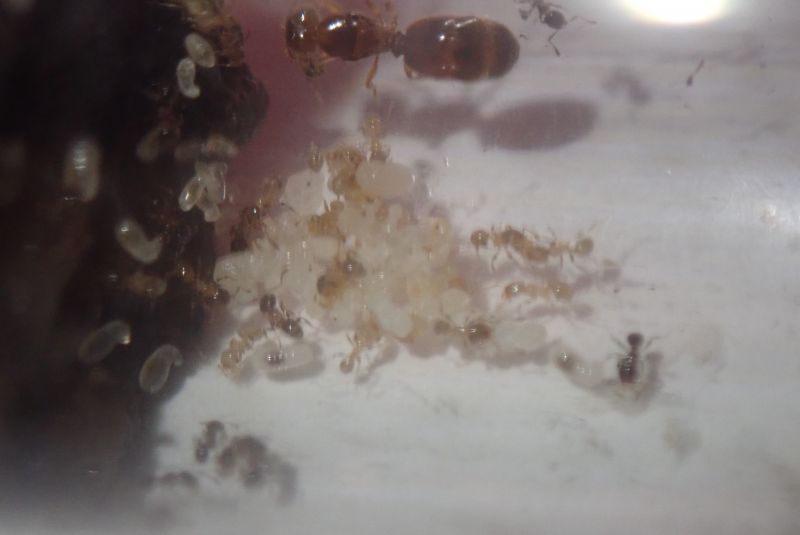
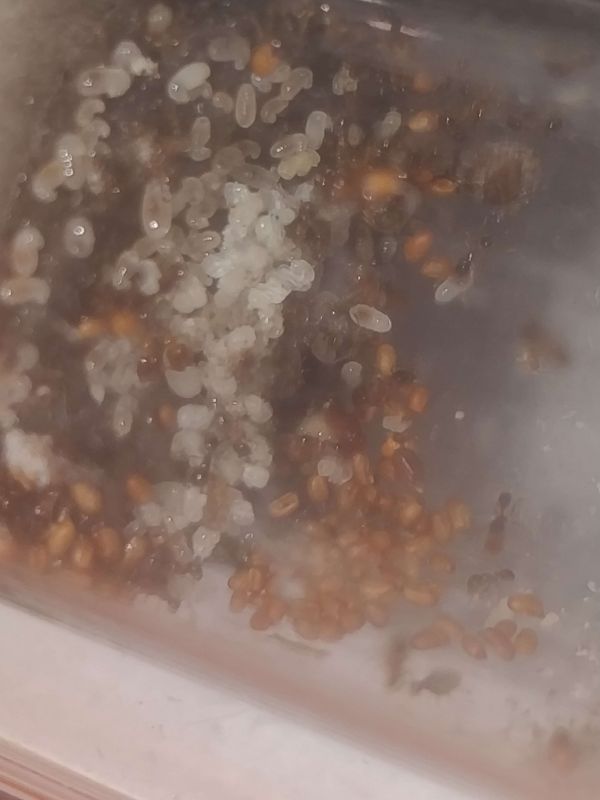
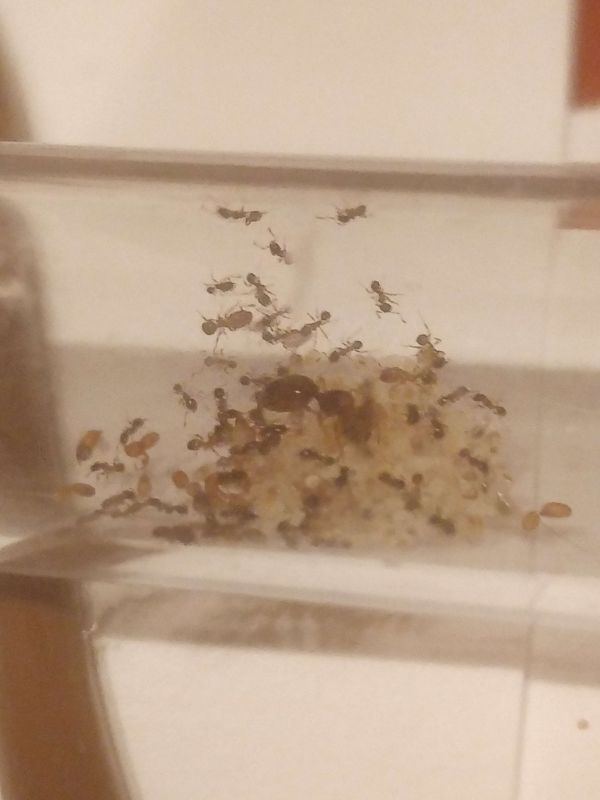
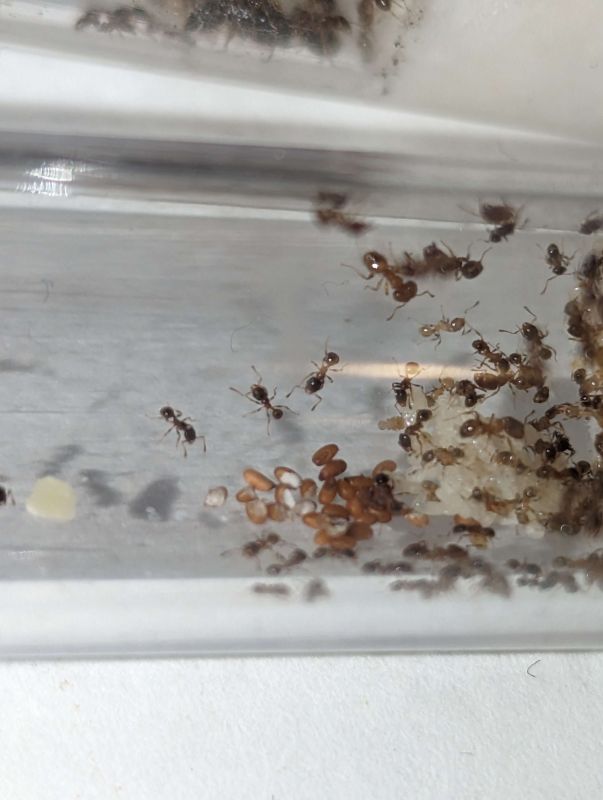
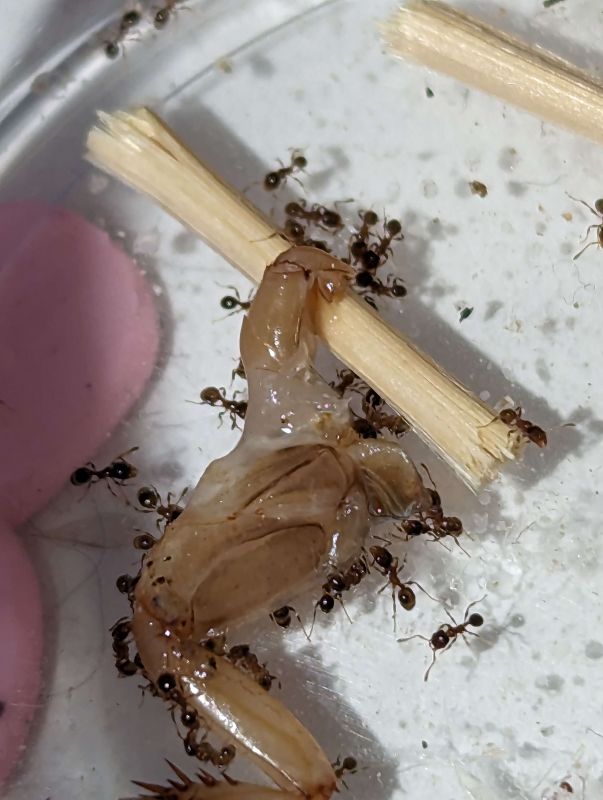
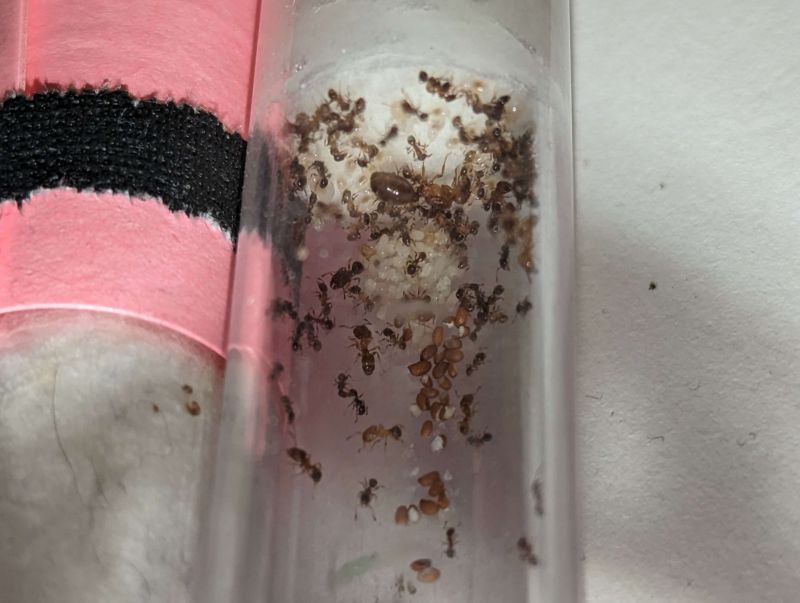
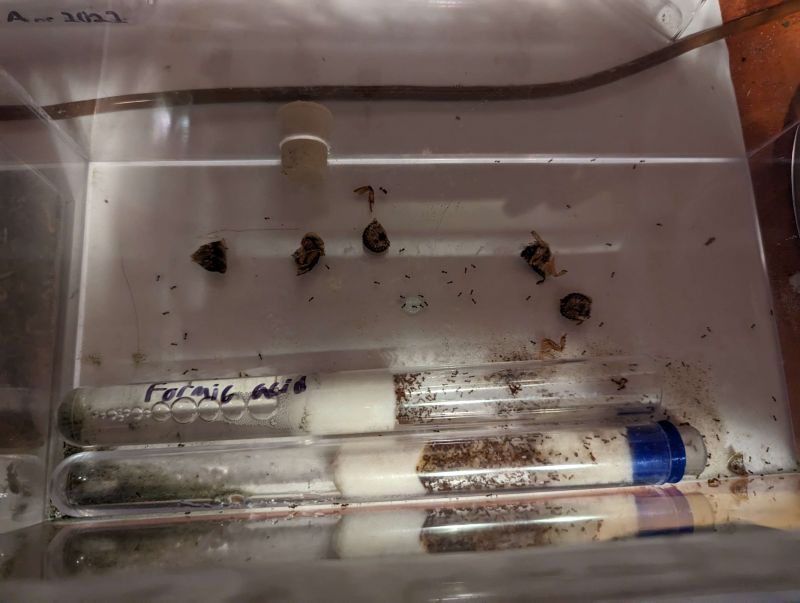
Pogonomyrmex occidentalis
No major changes since last year; they've just been chilling and munching on seeds.
- ANTdrew, BDantsalberta and Ernteameise like this
#185
 Offline
-
Posted June 24 2023 - 8:28 AM
Offline
-
Posted June 24 2023 - 8:28 AM
These are some awesome colonies!
#186
 Offline
-
Posted June 24 2023 - 8:50 AM
Offline
-
Posted June 24 2023 - 8:50 AM
Very nice!!! P. bicarinata can be really pesky, but you gotta love ‘em. I’m thankful mine haven’t escaped this year. Yet.
- Mettcollsuss and TennesseeAnts like this
"The ants are a people not strong, yet they prepare their meat in the summer." Prov. 30:25
Keep ordinary ants in extraordinary ways.
Keep ordinary ants in extraordinary ways.
#187
 Offline
-
Posted June 24 2023 - 11:11 AM
Offline
-
Posted June 24 2023 - 11:11 AM
Nice colonies, I've wanted bicarinata for a while and I'm pretty sure they were my very first colony which unfortunately died at 20ish workers.
Interested buying in ants? Feel free to check out my shop!
Feel free to read my journals, like this one.
Wishlist:
Atta sp (wish they were in CA), Crematogaster cerasi, Most Pheidole species
#188
 Offline
-
Posted August 15 2023 - 8:33 AM
Offline
-
Posted August 15 2023 - 8:33 AM
Acromyrmex versicolor
Starting to see more fungus growth in the large nest. Once they get a significant garden going in the large nest, I'll start to dry out the smaller nests so that I the colony will be fully confined within one large nest. I don't have any plans to grow them significantly larger than they are now, since they're still small enough to be easily manageable but large enough to be fun to observe and take in larger quantities of flowers.
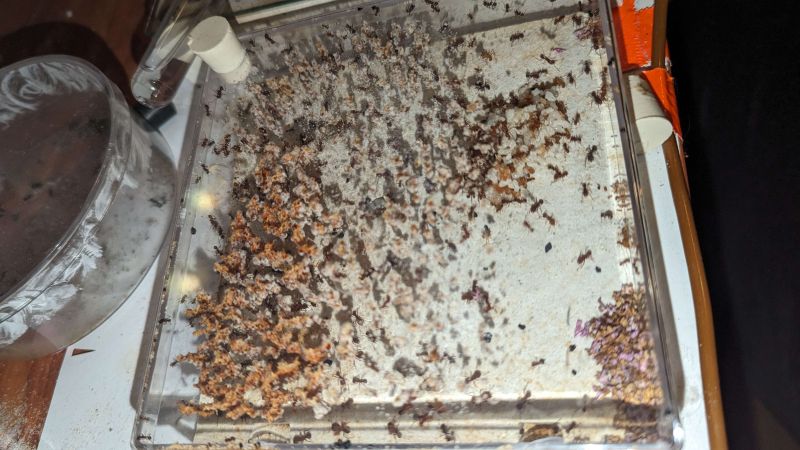
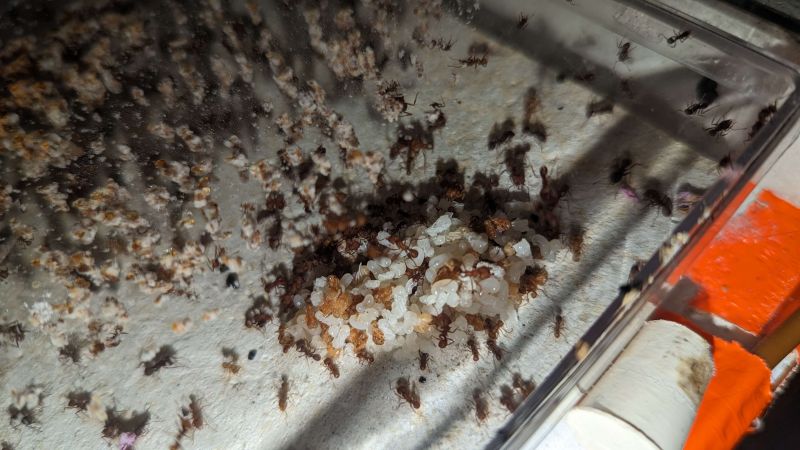
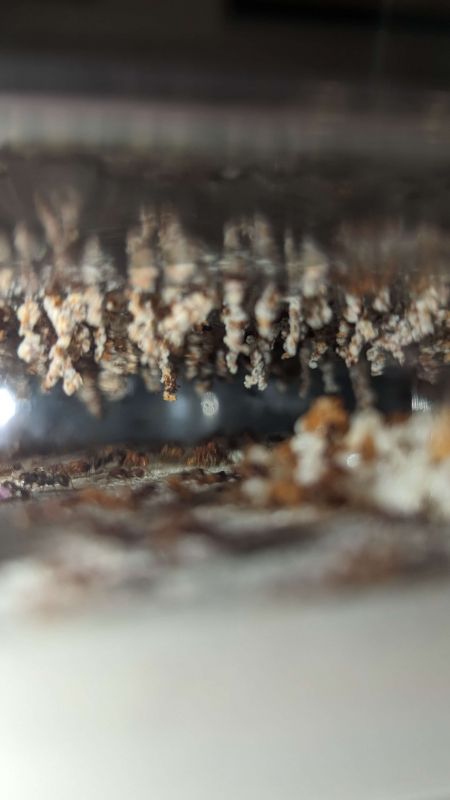
Camponotus novaeboracensis
This queen just got nanitics recently, and I already enjoy them more than any other Camponotus from this region that I've kept. They got a healthy-sized nanitic batch and aren't nearly as timid as many other founding Camponotus.
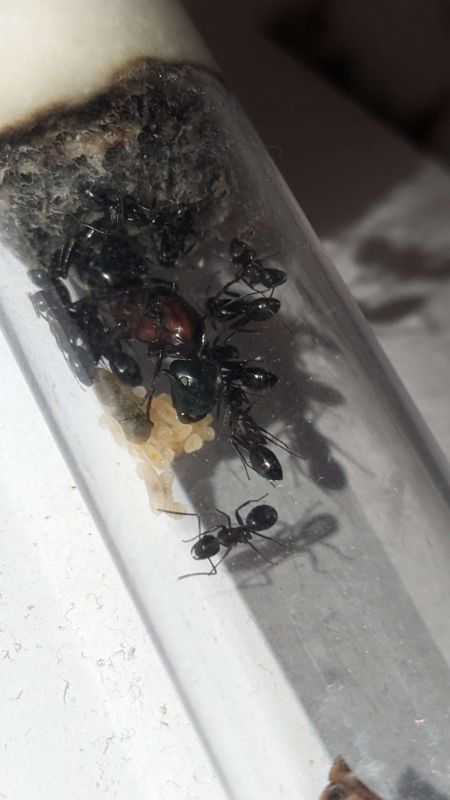
Formica obscuriventris
I collected this queen from a small lakefront surrounded by forest. I collected a decent number of F. subsericea pupae from two different colonies to give to her, along with a callow to help her open the pupae. They are currently in a petri dish nest, with about half of the pupae already eclosed. Interestingly, the majority of the newly eclosed hosts have labial gland disease, despite none of the workers in the colony I collected them from showing any visible signs of infection. Hopefully they won't spread the infection to the obscuriventris larvae, but if they do then at least I'll have a colony with funny-shaped workers.
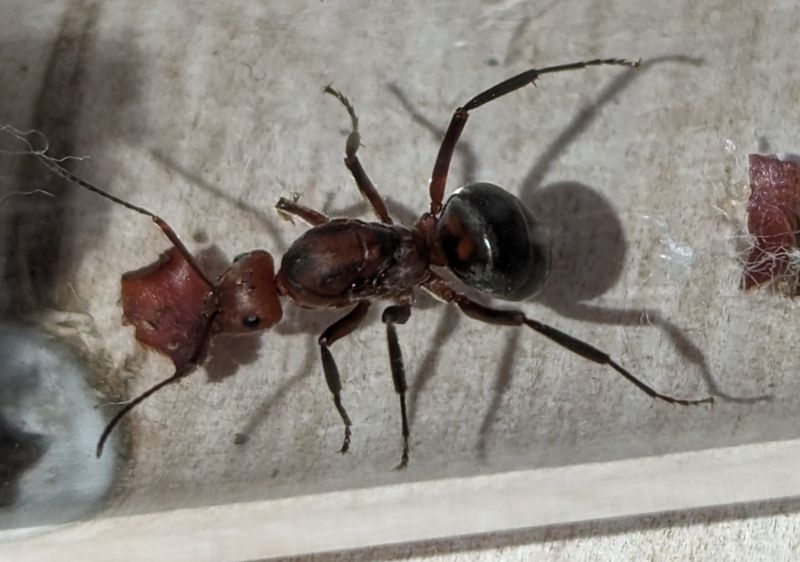
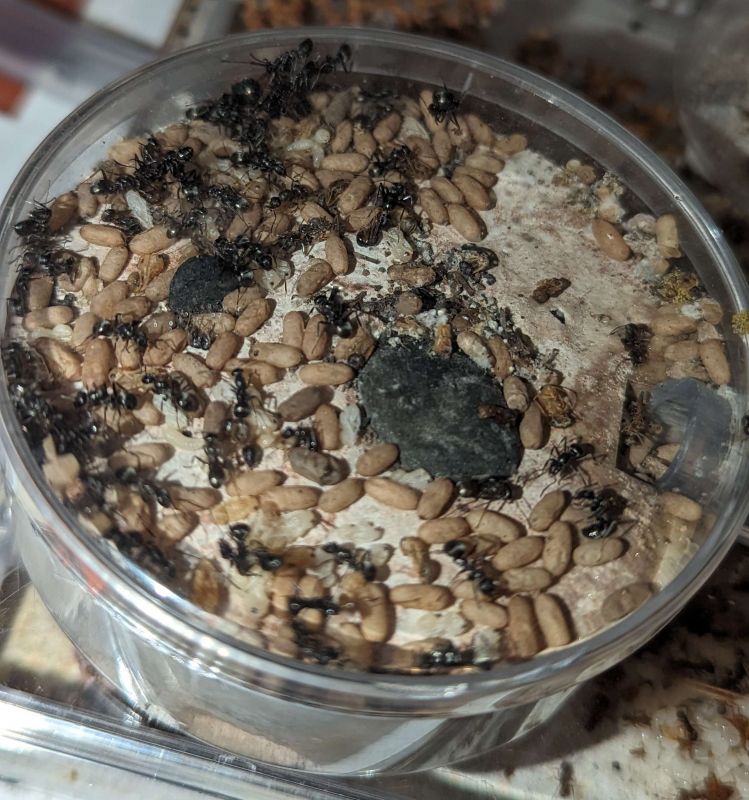
Formica subintegra
I collected four subintegra queens along with the obscuriventris queen. I don't think I'll keep them long-term since I don't really have the capacity to regularly collect brood for them, but I'll at least give them a shot for a little while.
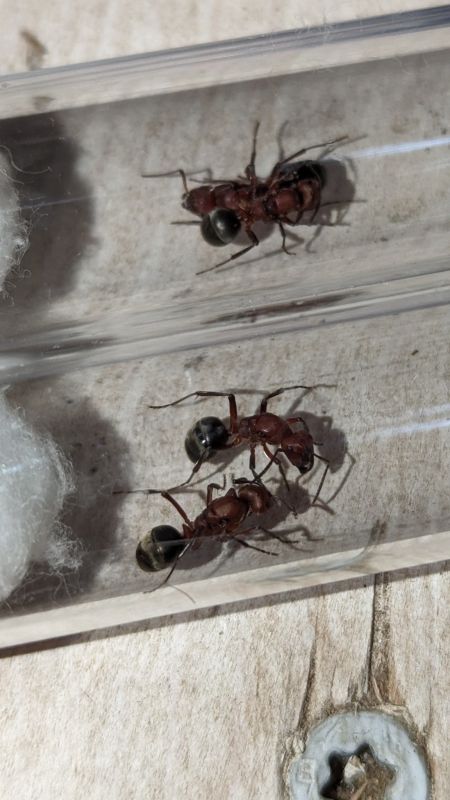
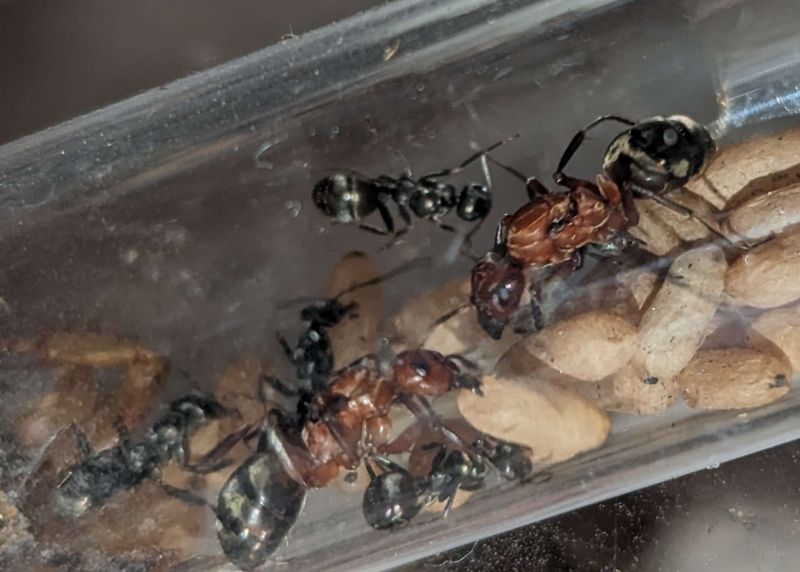
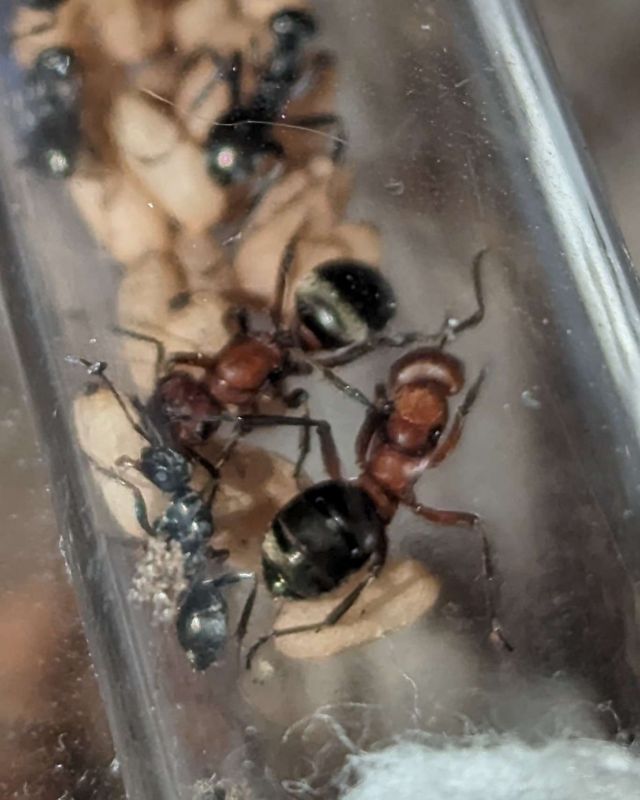
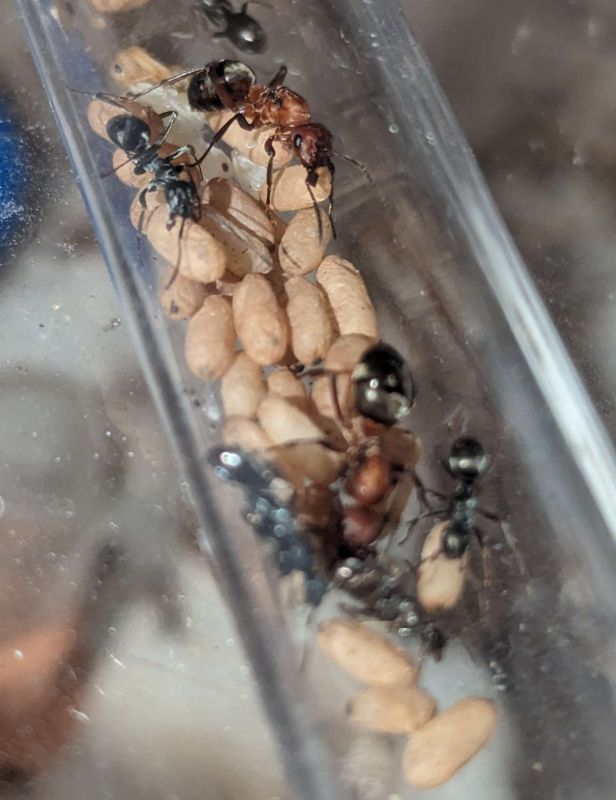
Pheidole bicarinata
In the just under two months since my last update, this colony has grown a lot. They're easily in the several hundreds, maybe even low thousands now. They've gone from filling one test tube to filling a decent portion of a THA inception chamber, even with a chunk of the colony hanging out in the backup water tube.
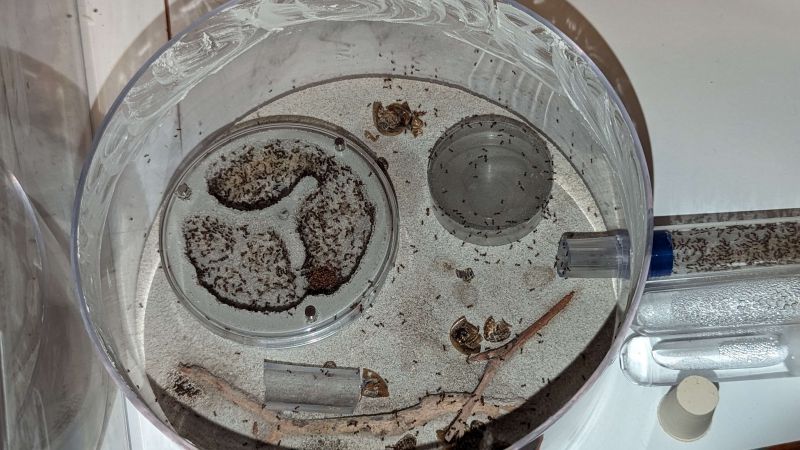
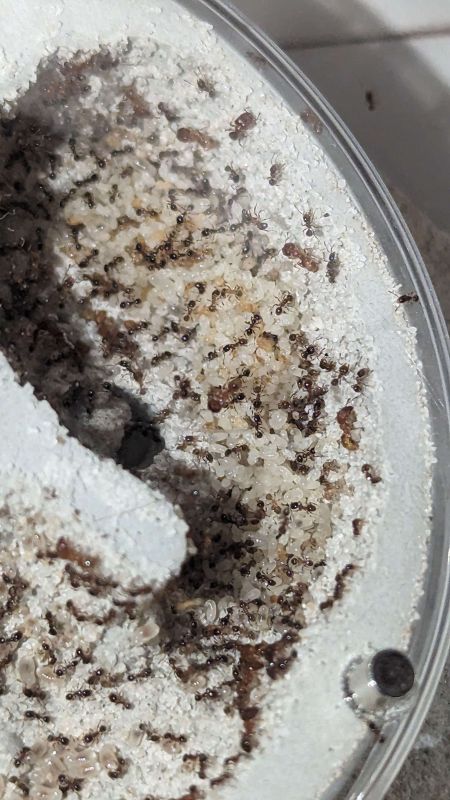
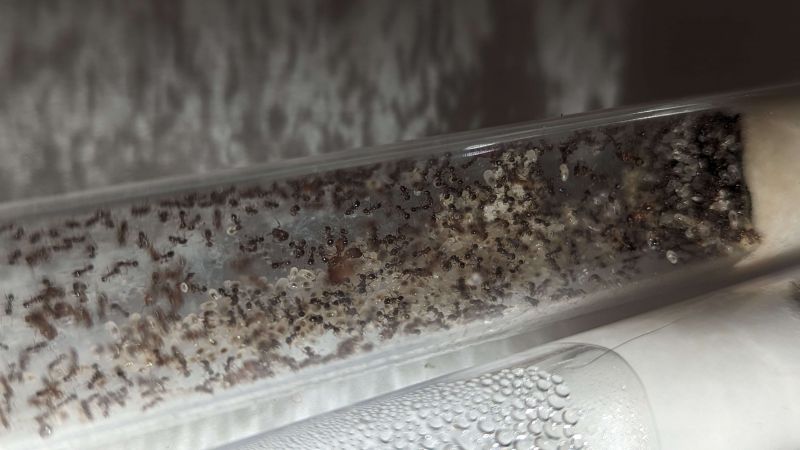
Pheidole dentata & Pheidole morrisii
Lumping these two together for now since they're in the same situation.
I've been on a Pheidole kick recently, especially with how well my bicarinata are doing, so when I saw dentata and morrisii for sale I had to get some. The dentata currently have 8 workers and the morrisii have 11, though both have fairly small brood piles. They're both eating very well, not as timid as I would expect, and the morrisii queen even helps with workers with the roaches.
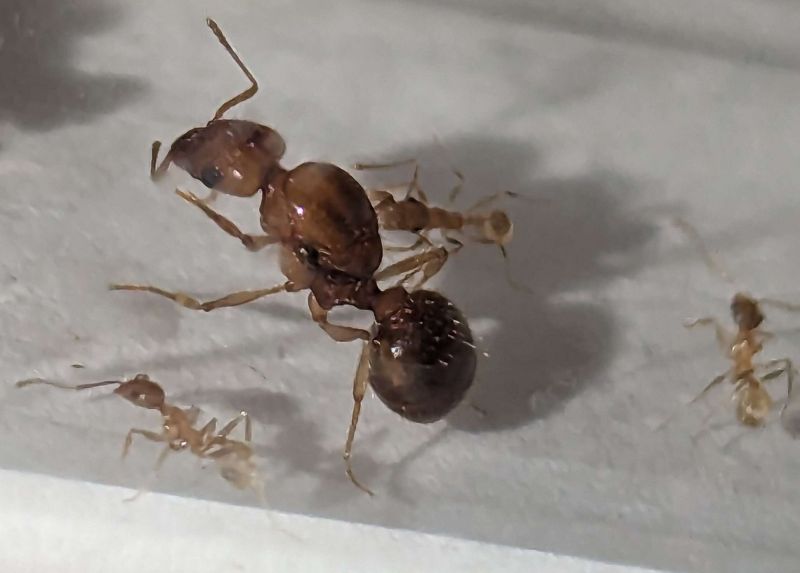
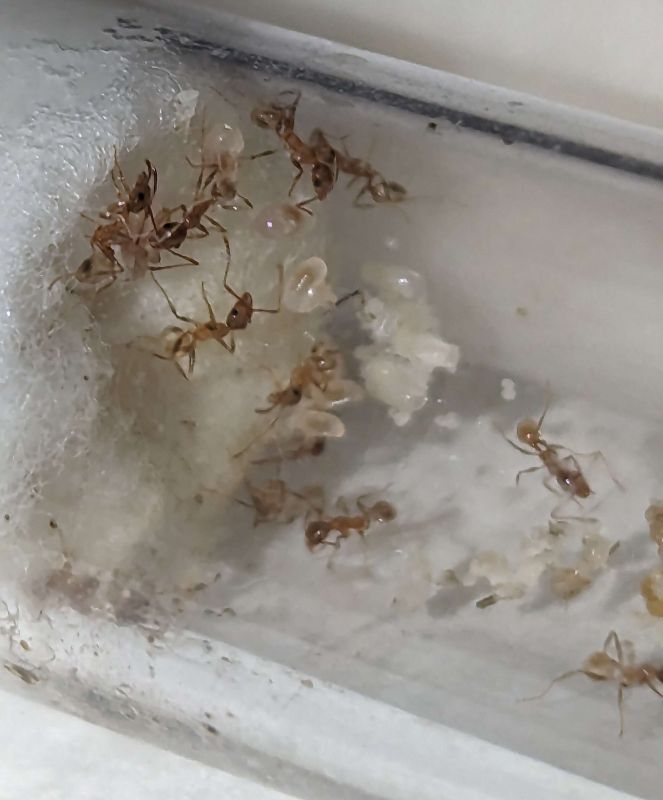
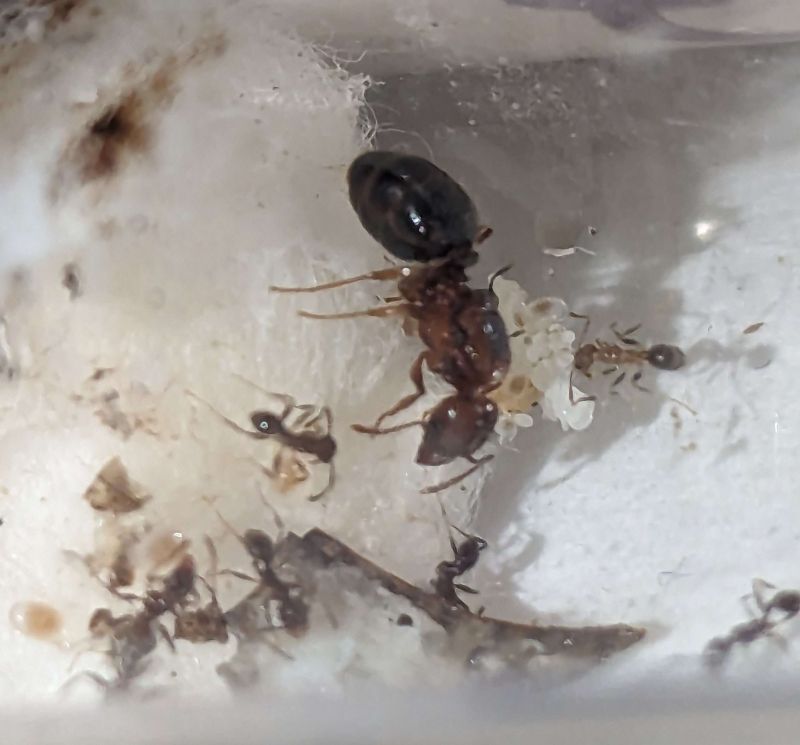
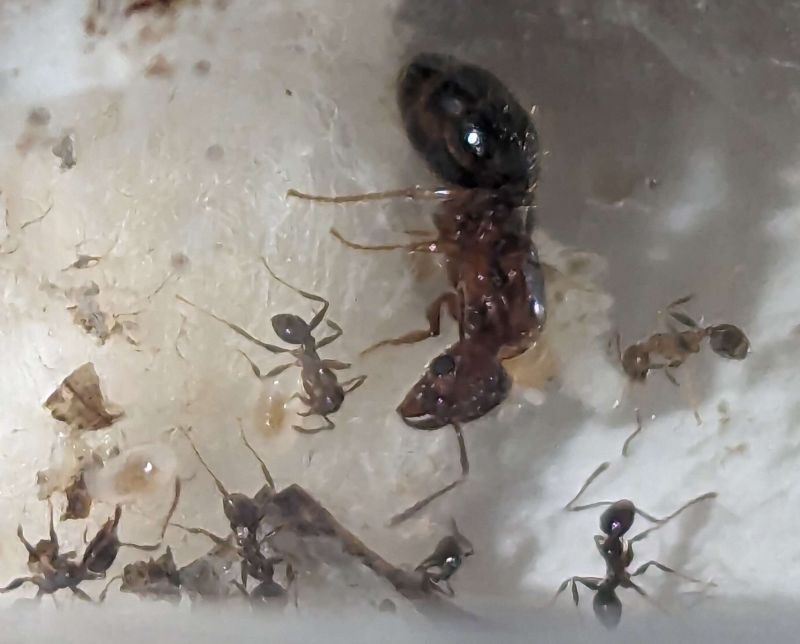
- TennesseeAnts, ANTdrew, UtahAnts and 2 others like this
#189
 Offline
-
Posted August 15 2023 - 2:57 PM
Offline
-
Posted August 15 2023 - 2:57 PM
Love it! ![]()
#190
 Offline
-
Posted October 23 2023 - 4:56 PM
Offline
-
Posted October 23 2023 - 4:56 PM
A quick update without photos, though I'll likely add some photos in a follow-up.
Acromyrmex versicolor
Nothing major to report on, mostly just business as usual. The lid of the larger nest is now most covered with fungus stalactites, though they still have room to grow them down. Now that the garden in the large nest is established, I've been slowly drying out the smaller nests to get them to consolidate into the larger one. One of the smaller nests is now fully vacant, but they've been holding on tight to their original small nest. I've decided to let them keep it, so that they'll have a backup nest, just in case. I recently ran out of their favorite dried rose petals and dried chrysanthemums, so they've begrudgingly been accepting my other flower offerings.
Aphaenogaster treatae
A new addition to my collection. They're a darker morph of A. treatae, the queen is nearly black but with some red along the back and sides of the mesosoma, and the workers look like they're probably going to be a dark reddish, though I won't call it yet since they're nanitics and not fully darkened yet. They're growing agonizingly slowly, so far only one new pupa at a time, but their brood pile's starting to get a bit larger so hopefully I won't have to suffer under slow growth rates for too much longer.
Assorted Pheidole
The morrisii were doing great until they weren't; another queen fallen victim to sudden Eat [censored] and Die syndrome. The dentata are doing great, they already have a large brood pile and several majors, it feels like they're growing at a significantly faster rate than the bicarinata were at their size. I also just got a small P. pilifera colony. Only around four workers so far, but I'm very excited for them to grow out. The bicarinata are also doing very well. I just moved them into a natural formisquarium, which they look great in. I've been debating back and forth about attempting to grow these guys out to a mature size, since they're one of the few species I have which would be feasible to do so, and I think I've decided to go for it. It should be doable, and a nice last antkeeping achievement to get in this last year before college.
- OiledOlives and 100lols like this
1 user(s) are reading this topic
0 members, 1 guests, 0 anonymous users





